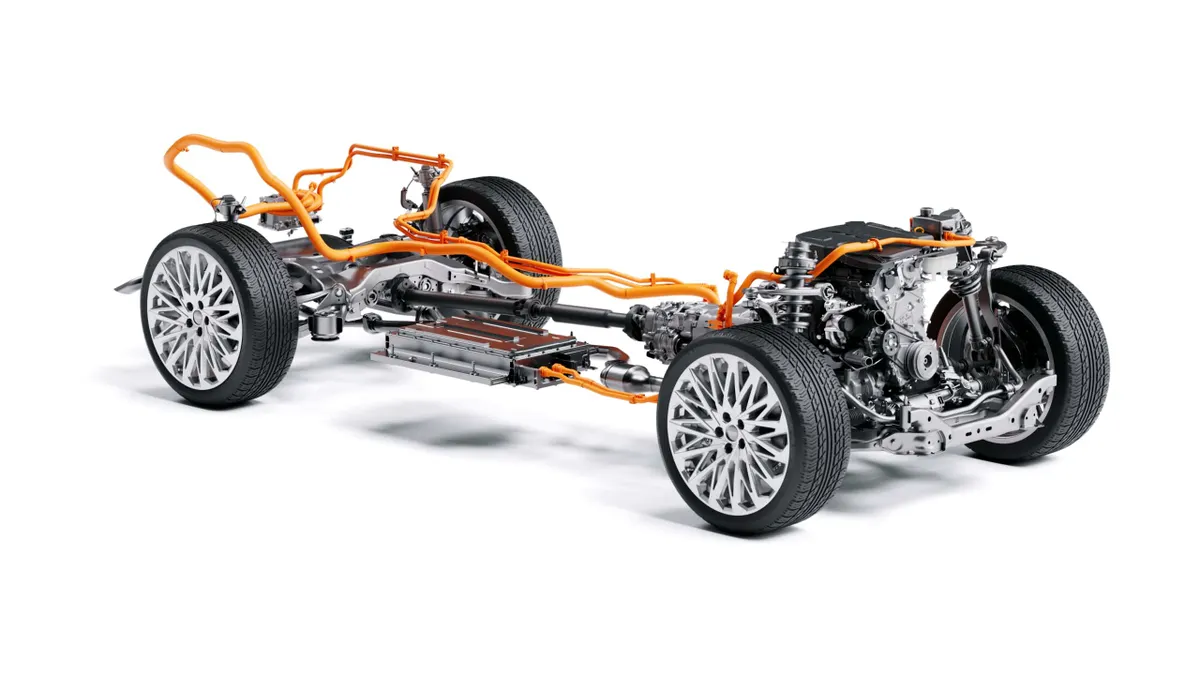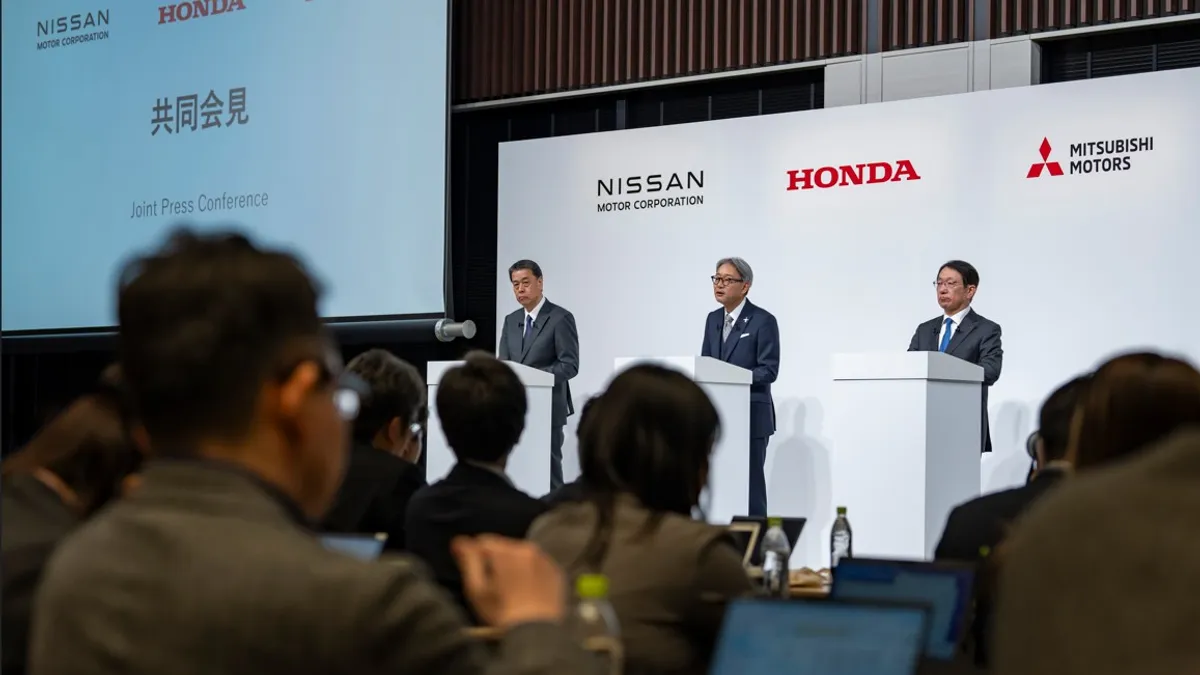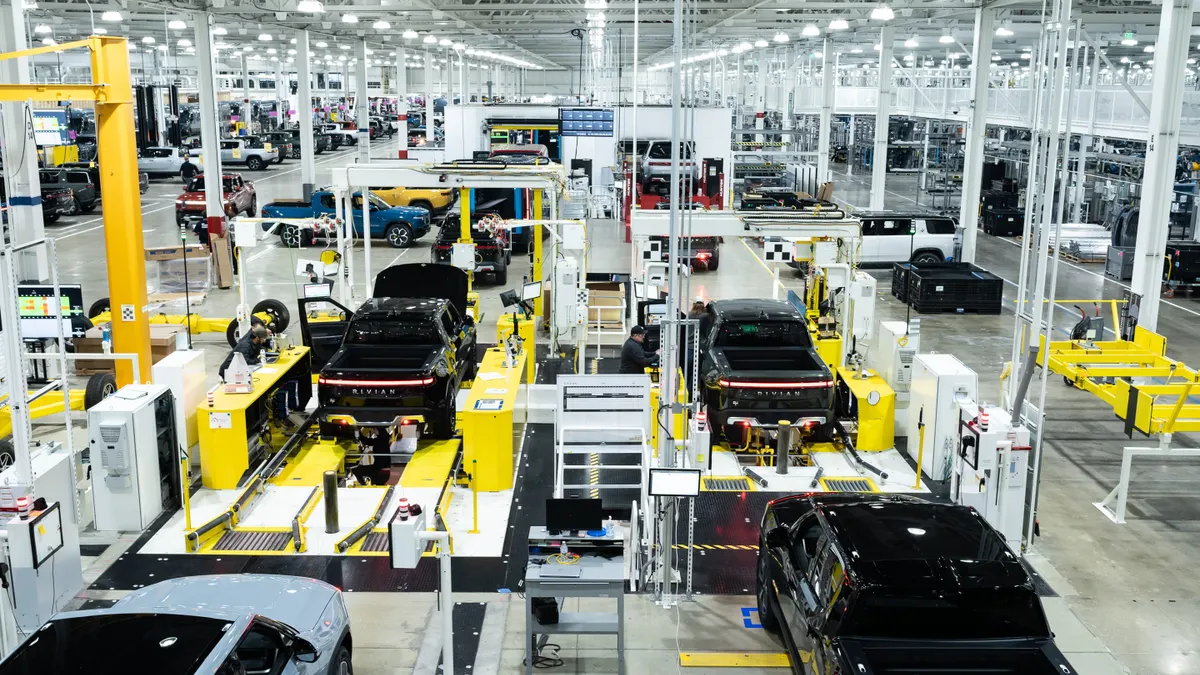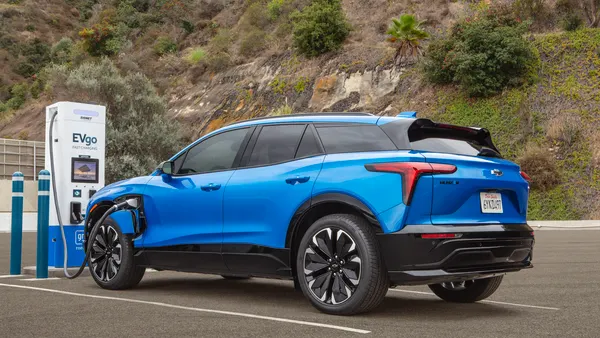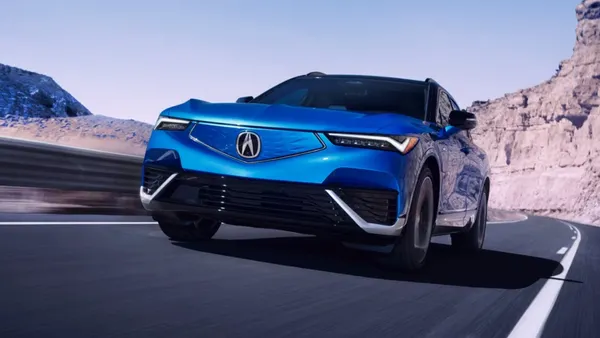Dive Brief:
- Hyundai Motor Group unveiled its next-generation hybrid system utilizing advanced electrification technology that boosts performance and increases fuel economy, the automaker announced in a press release April 21.
- The automaker says the new hybrid system offers 19% more power and a 45% improvement in fuel efficiency compared to internal combustion engines of the same class.
- A version of the new hybrid powertrain paired with a 2.5 turbo-charged engine will debut in the all-new Palisade SUV hybrid, which recently entered production in Ulsan, South Korea, but will be offered in other Hyundai and Kia models in the future. The automaker also plans to launch a second hybrid system paired with a 1.6-liter engine for smaller vehicles.
Dive Insight:
Hyundai, along with Toyota Motor Co., is actively expanding its global hybrid vehicle lineup as an alternative to the more expensive electric vehicles sold today. Hybrid vehicles use smaller, less-costly battery packs, which makes them more affordable to produce, while still providing improved fuel economy and lower emissions compared to internal combustion engine powertrains of the same class, according to Hyundai.
“We will continue to develop innovative technologies that actively utilize electrification capabilities during the transition to EVs, providing customers with eco-friendly vehicles that offer superior performance,” said Dong Hee Han, EVP and Head of Hyundai’s Electrified Propulsion Test Center, in the release.
Hyundai’s new hybrid system features a redesigned transmission with two integrated electric motors. The improved design maintains precise control of engine load and power output of the two motors to ensure that the gas engine operates at its highest efficiency. Hyundai also says the dual-motor transmission design helps to reduce noise and vibrations for a more refined driving experience.
The transmission is also flexible and can also be paired with various internal combustion engines across a range of Hyundai vehicles, such as sub-compacts, crossovers and large SUVs. Depending on the configuration, the hybrid system can deliver a power output from the low 100 horsepower range to mid-300 hp.
One of the transmission’s electric motors (P1) is used for engine starting, recharging the vehicle’s battery and power output for propulsion. The second drive motor (P2) is utilized solely for propulsion and recouping energy through “Smart Regenerative Braking,” which automatically applies the optimal braking force based on navigation data and distance from other vehicles to reduce brake pedal inputs and help maximize power regeneration.
Other technology includes a feature called “Hierarchical Predictive Control” to further improve fuel efficiency. HPC optimally controls battery charge by predicting the driving route and road conditions, selecting the best driving mode along the route, including EV only, hybrid and regenerative braking mode.
When paired with Hyundai’s 2.5-liter engine, the P1 motor helps to minimize power losses to increase efficiency of the hybrid system. The engine operates similar to an Atkinson cycle engine and the electronically-controlled powertrain automatically maintains the optimal RPM to maximize efficiency without driver input.
The automaker’s new hybrid system also supports some of the same functions as its EVs, such as vehicle-to-load functionality to provide power for appliances or personal tech devices using the vehicle’s battery reserves.
Hyundai plans to launch a rear-wheel-drive version of its new 2.5-liter hybrid system in 2026 and expand the technology to vehicles sold under its luxury brand Genesis. However, the company noted that launch timing may vary depending on the model, region and market, according to the release.
On April 24, Hyundai reported its highest quarterly revenue in company history. The company cited brisk sales of electrified models for the record-high revenue, sales of which increased by 38.4% year-over-year to 212,426 vehicles in Q1.



